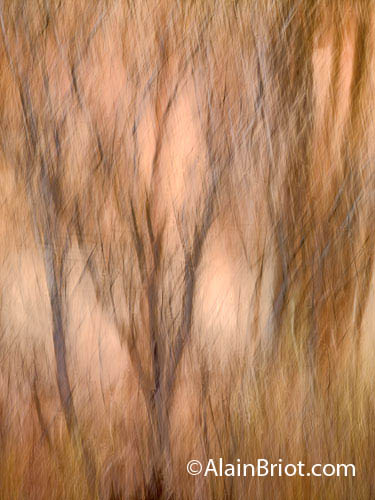Thanks for showing these Alain. A completely beautiful series that would look wonderful on my walls. Perhaps someday. Until then, will you share a little more of the technique? I have seen someone else's try at this kind of shot, not nearly as perfected as yours I might add, and I have even tried it a few times myself. That was a total disaster. The movement part is what foiled my plans. Coule you shed any light on that part of the technique?
James
Basically Hasselblad V with a Phase One P45 and moving the camera during long exposures. A large part of being successful with this process is developing the necessary experience. It literally takes hundreds if not thousands of shots to get a single good one. It is also important to spend time learning and finding out which subjects work and which subjects do not work.
It's truly a process that needed digital to be done well. My teacher in Paris in the early 80's, Scott McLeay, taught us this process first, also using a Hasselblad V. He was using this approach himself for his color work. However, with film he was limited to 24 exposures per roll maximum (if using 220 film) and even with multiple holders loaded and ready to go, you had to keep yourself to 100 exposures, provided you had 4 holders each with 220 film. Then you had to reload everything. This was not exactly practical. With digital I use 16gb cards right now and that makes the process way easier. I can shoot over 200 or 300 exposures per card, and changing to a new card takes no time at all. This means I can focus on the process totally.
Also, developing film took time and was expensive. With digital I can see the results immediately on the LCD screen, then confirm just minutes or hours later by converting the images on my computer.
Finally, printing. Scott used the Fresson process to print his images, a process which is both slow, complicated and expensive. Fresson is a small printer in France who selects the clients he wants to work with. He is the only one who uses a charcoal printing process to print both color and black and white images. The look of his prints is not unlike that of pigmented prints (read: inkjet) on matte papers. But the cost is much higher and the time you have to wait is like, forever. Now we can create this look in minutes in our studios.
All in all, a much much easier approach to a process that had been practiced before but was complicated by the limitations of film.







